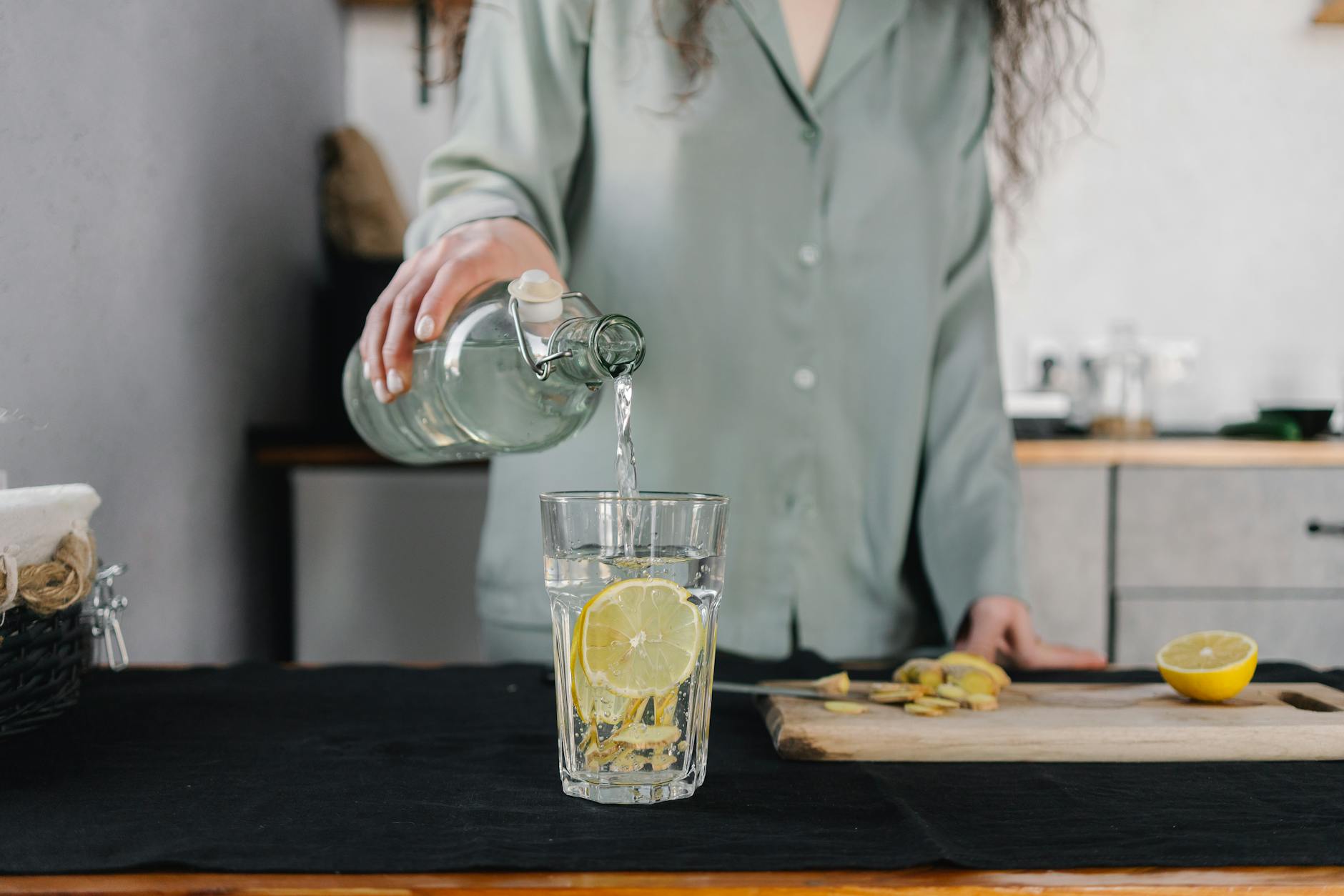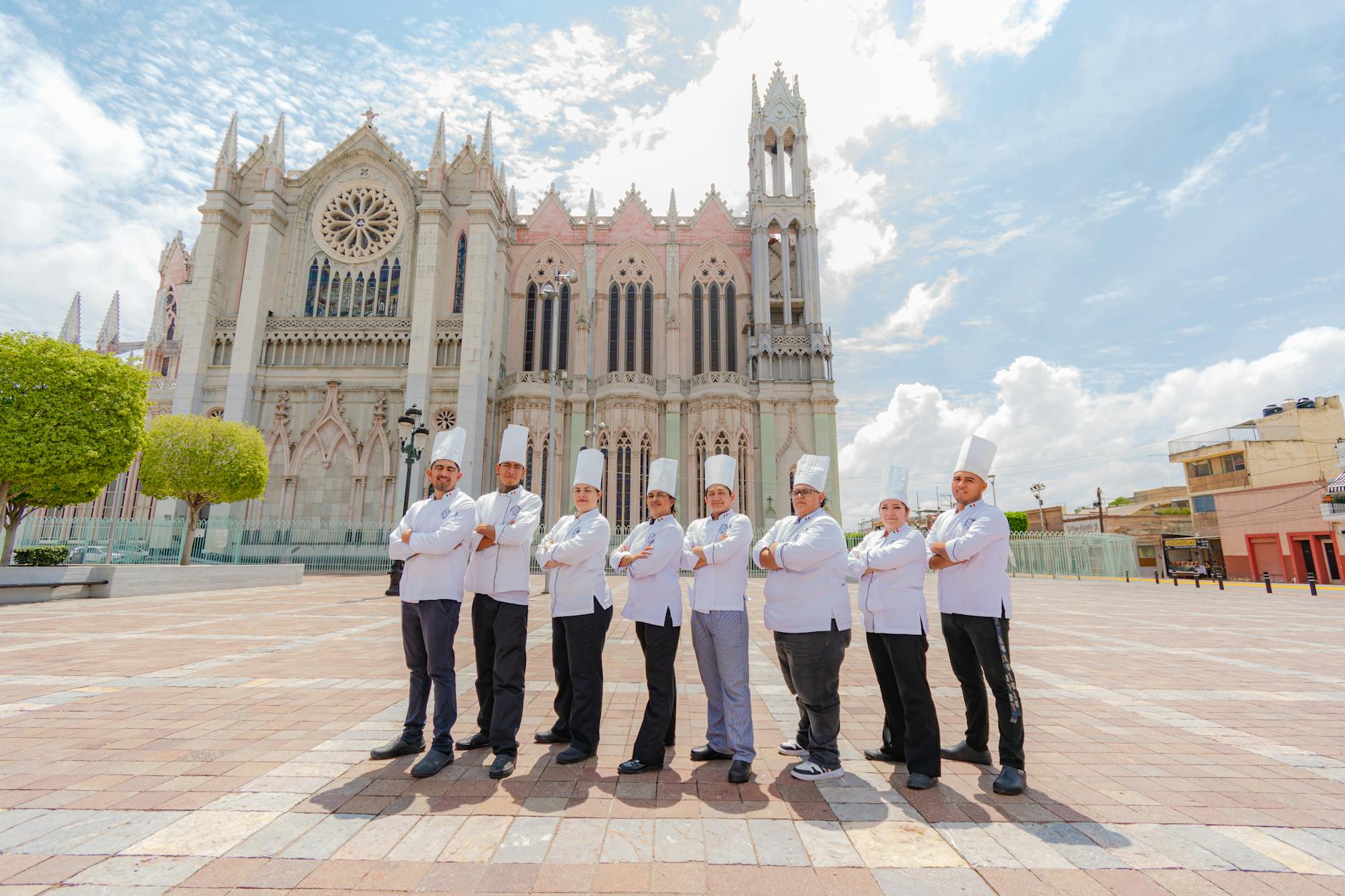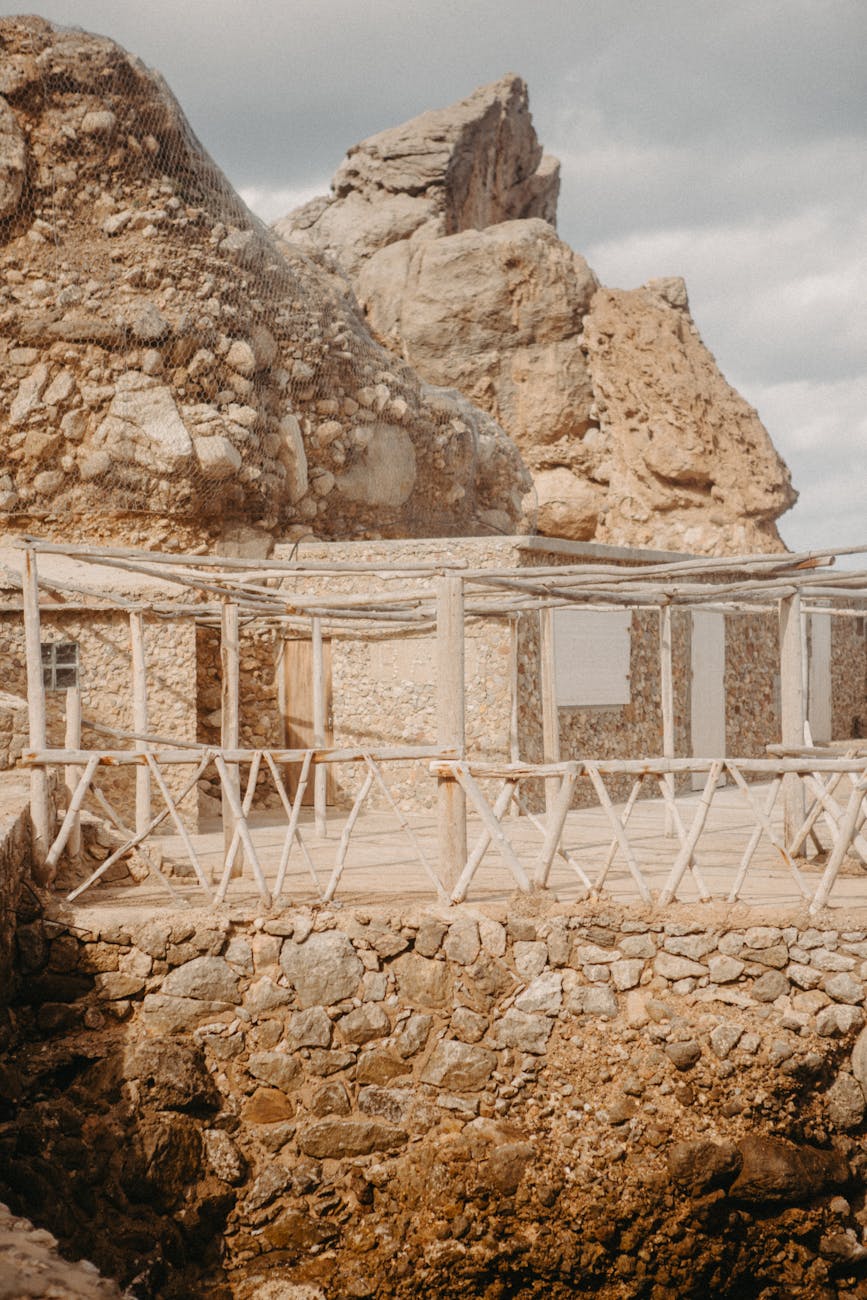The Scent of Saffron: How a Barcelona Cooking School Found Its Flavor Through Design
Crafting a Culinary Identity: Paella in Barcelona’s Immersive Gastronomic Journey
In the vibrant heart of Barcelona, a city steeped in culinary tradition and modern innovation, a unique establishment has emerged to offer more than just a cooking class. “Paella in Barcelona” is not merely a venue; it’s an immersive gastronomic experience, housed within the repurposed shell of an old industrial building. This setting provides a distinctive backdrop for a journey into the heart of Spanish cuisine, specifically focusing on the iconic paella. The challenge for any brand in such a competitive and culturally rich landscape is to communicate its essence effectively. This article delves into how the branding firm Copyshow approached the task of creating a compelling brand identity for Paella in Barcelona, exploring the strategies employed and the impact of design on conveying an authentic and engaging culinary narrative.
Context & Background
Barcelona, renowned globally for its distinctive Catalan culture, architecture, and vibrant street life, also boasts a formidable reputation as a gastronomic capital. The city is a melting pot of traditional eateries, Michelin-starred restaurants, and innovative culinary ventures. Within this dynamic environment, businesses offering authentic Spanish culinary experiences, particularly those centered around paella, face the dual challenge of standing out and remaining true to tradition. Paella, a rice-based dish with diverse regional variations, holds a special place in Spanish gastronomy, often associated with communal gatherings, family celebrations, and the sunny disposition of Mediterranean life.
The sourcing of information for this article primarily stems from a report by TrendHunter.com, a platform that identifies and analyzes emerging trends across various industries. While TrendHunter.com provides an overview of the branding initiative, a comprehensive understanding requires exploring the broader context of brand identity development in the hospitality sector and the specific nuances of marketing a culinary experience in a city like Barcelona. The success of such an endeavor hinges on a brand’s ability to connect with its target audience on an emotional and sensory level, translating the taste, aroma, and social significance of its offerings into a cohesive visual and narrative identity.
The choice of an “old industrial venue” for Paella in Barcelona is a significant branding decision in itself. Industrial spaces often evoke a sense of history, authenticity, and rawness, which can be leveraged to create a unique atmosphere. This choice suggests a deliberate move away from traditional, perhaps overly formal, restaurant settings, aiming for a more approachable and hands-on culinary experience. The juxtaposition of industrial heritage with the warmth and conviviality of Spanish cooking creates a compelling narrative that Copyshow likely sought to amplify through its branding efforts.
Understanding the competitive landscape is also crucial. Barcelona hosts numerous cooking schools and restaurants offering paella. Some may focus on high-end, gourmet interpretations, while others might emphasize a more casual, tourist-oriented approach. Paella in Barcelona’s positioning within this spectrum, as an “immersive gastronomic experience,” implies a desire to offer something deeper than a simple meal or a basic cooking demonstration. It suggests an engagement with the culture, the ingredients, and the social aspects of preparing and enjoying paella.
Copyshow, the branding firm tasked with this project, would have been tasked with translating this multifaceted experience into a tangible brand identity. This involves not just visual elements like logos and color palettes but also the underlying messaging, tone of voice, and overall perception the brand aims to cultivate. The effectiveness of their work would be measured by how well it resonates with potential customers, encouraging them to choose Paella in Barcelona for an authentic and memorable culinary adventure.
The TrendHunter.com summary, though brief, highlights the core offering: an “immersive gastronomic experience” in an “old industrial venue.” This succinct description sets the stage for a deeper dive into how brand imagery can be crafted to support and enhance such an experience, ensuring it is both distinctive and appealing within the bustling culinary scene of Barcelona.
In-Depth Analysis: The Art of Food-Inspired Brand Imagery
Copyshow’s work for Paella in Barcelona exemplifies a strategic approach to brand identity development, particularly in the food and hospitality sector. The core principle at play is the creation of “food-inspired brand imagery,” a concept that goes beyond simple aesthetic appeal to deeply embed the essence of the product – in this case, paella – into the brand’s visual and communicative language. This approach recognizes that food is not just sustenance; it’s an experience involving taste, smell, texture, and cultural context. Effective branding aims to evoke these sensory and emotional connections through design.
The choice of an “old industrial venue” as the physical space for Paella in Barcelona provides a rich source of inspiration for visual storytelling. Industrial design often features raw materials like concrete, metal, and exposed brick, alongside functional aesthetics. When paired with the vibrant colors and ingredients of paella – the deep red of peppers, the golden hue of saffron, the verdant green of peas – a striking visual contrast can be created. Copyshow would likely have explored how to bridge this apparent gap, using design elements to harmonize the industrial setting with the warmth and tradition of Spanish cuisine.
One key area of analysis is how Copyshow translated the *concept* of paella into visual elements. Paella is characterized by its communal nature, its preparation in a wide, shallow pan (the paellera), and its medley of ingredients. The brand imagery might have incorporated:
- Color Palettes: Drawing directly from the ingredients. The warm yellows and oranges of saffron and paprika, the reds of tomatoes and peppers, the greens of beans and parsley, and the earthy browns of rice and seafood could form the foundation of the brand’s color scheme. These colors evoke feelings of warmth, richness, and the Mediterranean sun.
- Typography: The font choices could reflect a blend of tradition and modernity. Perhaps a classic serif font for a touch of heritage, combined with a cleaner, more contemporary sans-serif for approachability and accessibility. The typography would need to convey both the artisanal quality of the cooking and the inviting nature of the experience.
- Iconography and Symbolism: Symbols related to paella, such as the paellera itself, stylized representations of rice grains, or iconic Spanish ingredients, could be used. These visual cues serve as immediate signifiers of the brand’s focus.
- Photography and Illustration: High-quality imagery of the paella preparation process, the finished dishes, and the communal dining experience would be paramount. Illustrations could be used to convey a sense of handcrafted artistry or to simplify complex culinary processes for broader understanding. The “food-inspired” aspect is most directly communicated through these visual assets, making the food itself a protagonist in the brand’s narrative.
- Materiality: In a physical space, the choice of materials for signage, menus, and even tableware can reinforce the brand identity. The use of natural materials like wood, ceramic, and perhaps even touches of metal (recalling the industrial past) could tie into the food-inspired theme.
The “immersive gastronomic experience” suggests that the branding extends beyond the visual to encompass the entire customer journey. This means the brand identity must be consistent across all touchpoints, from the initial online discovery to the actual experience in the venue. This includes the website, social media presence, internal signage, staff uniforms, and even the way the food is presented.
Furthermore, Copyshow’s work likely addressed the challenge of differentiating Paella in Barcelona from other culinary offerings. By focusing on “food-inspired brand imagery,” they aimed to create an identity that is not only visually appealing but also deeply resonant with the core product and its cultural significance. This approach fosters an emotional connection with consumers, making the brand more memorable and desirable.
The industrial venue itself becomes a canvas. Instead of fighting the inherent character of the space, a successful branding strategy would integrate it. The rough textures of concrete or brick could be softened by warm lighting and colorful accents derived from the brand’s food palette. The functional, often open, layout of industrial spaces can be ideal for showcasing the culinary process, aligning with the “immersive” aspect of the experience.
Ultimately, Copyshow’s task was to create an identity that is both authentic and aspirational. It needed to speak to those seeking a genuine taste of Spanish tradition while also appealing to a modern audience looking for unique and engaging experiences. The “food-inspired” approach is a powerful tool for achieving this, as it leverages the universal appeal and sensory richness of food to build a compelling and memorable brand.
Pros and Cons of Food-Inspired Branding
The strategy of employing “food-inspired brand imagery” for an establishment like Paella in Barcelona, while often highly effective, comes with its own set of advantages and potential drawbacks. Understanding these nuances is crucial for assessing the success of such a branding initiative.
Pros:
- Enhanced Sensory Appeal and Memorability: Food is inherently sensory – it appeals to taste, smell, sight, and even touch. By drawing inspiration directly from the ingredients and the dishes, brands can evoke these sensory experiences visually, making them more memorable and appealing to potential customers. The vibrant colors of paella ingredients, for instance, can translate into a visually striking and appetizing brand identity.
- Authenticity and Cultural Connection: For a dish like paella, which is deeply rooted in Spanish culture and tradition, food-inspired branding can effectively communicate authenticity. It signals a respect for the ingredients, the preparation methods, and the heritage associated with the dish, resonating with consumers who seek genuine culinary experiences. This can foster a stronger emotional connection and build trust.
- Clear Product Communication: A brand identity that is clearly inspired by its core product leaves little room for ambiguity. Potential customers can immediately understand what Paella in Barcelona offers. This directness can be particularly effective in cutting through the noise in a crowded market like Barcelona’s culinary scene.
- Versatility Across Touchpoints: Food imagery is highly adaptable. It can be translated into logos, website design, social media content, menu layouts, interior décor, and even staff uniforms. This allows for a cohesive and consistent brand experience across all customer interactions, from the first online encounter to the final bite.
- Emotional Resonance and Storytelling: Food is often linked to personal memories, celebrations, and social gatherings. Food-inspired branding can tap into these emotional associations, creating a richer narrative for the brand. This can foster a sense of warmth, community, and enjoyment, key elements for a successful hospitality venture.
- Differentiation: In a competitive market, a unique and well-executed food-inspired branding strategy can help an establishment stand out. By focusing on the visual representation of their culinary offering, they can carve out a distinct niche and attract customers who are drawn to that specific aesthetic and message.
Cons:
- Risk of Being Too Literal or Generic: If not executed with creativity and nuance, food-inspired branding can become too literal, leading to a predictable or even cliché identity. For example, simply plastering images of paella on everything might lack sophistication and fail to convey the “immersive gastronomic experience.”
- Potential for Mismatch with Venue Aesthetics: As in the case of the “old industrial venue,” there’s a potential for conflict between the vibrant, often warm, imagery of food and the raw, utilitarian aesthetic of the space. Bridging this gap requires careful design to ensure harmony rather than dissonance.
- Maintaining Quality Perception: The brand imagery must consistently reflect the actual quality of the food and the experience. If the visual branding is aspirational and luxurious, but the actual offering falls short, it can lead to disappointment and damage the brand’s reputation.
- Over-reliance on Visuals: While strong visuals are crucial, an over-reliance on them can sometimes overshadow other important aspects of the brand, such as the quality of service, the expertise of the chefs, or the uniqueness of the cultural context.
- Seasonality and Ingredient Variation: While paella is relatively consistent, some food-inspired brands might need to contend with seasonal ingredient availability or variations in presentation, which could pose challenges for maintaining a static brand identity.
- Perception of Target Audience: A very specific food-inspired aesthetic might inadvertently alienate certain segments of the audience if it’s perceived as too niche or exclusive, rather than broadly inviting.
Copyshow’s challenge was to harness the power of food-inspired imagery while mitigating these potential downsides. This would involve a sophisticated integration of visual elements that are evocative and appealing without being overly simplistic, ensuring that the brand identity enhances, rather than detracts from, the overall experience offered by Paella in Barcelona.
Key Takeaways
- Brand Identity as a Sensory Experience: Effective branding in the food industry goes beyond aesthetics; it aims to evoke the sensory qualities of the food itself, creating a deeper connection with consumers.
- Contextual Integration is Crucial: For Paella in Barcelona, the “old industrial venue” provides a unique backdrop. Successful branding integrates the food’s inspiration with the venue’s character to create a cohesive and compelling narrative.
- Authenticity Drives Connection: Highlighting traditional ingredients and preparation methods through food-inspired imagery can establish a brand’s authenticity and resonate with consumers seeking genuine cultural experiences.
- Visuals Must Reflect Reality: Brand imagery should be aspirational but grounded in the actual quality of the product and service. A disconnect can lead to disappointment and reputational damage.
- Nuance Prevents Genericity: While drawing from food is powerful, the execution must be sophisticated to avoid cliché. A nuanced approach ensures the brand stands out rather than blending in.
- Consistency Across Touchpoints is Key: The brand’s visual and thematic elements must be consistently applied across all platforms and customer interactions to build a strong and recognizable identity.
- Emotional Resonance Builds Loyalty: By linking food to positive emotions, memories, and social experiences, brands can foster stronger customer loyalty and create a more meaningful relationship with their audience.
Future Outlook
The future for establishments like Paella in Barcelona, particularly those that invest in strong, food-inspired brand identities, appears promising. As consumer preferences continue to evolve, there’s a growing demand for authentic, experiential dining. The trend towards seeking out unique culinary journeys, rather than just meals, means that well-crafted brand narratives will become increasingly important differentiators.
For Paella in Barcelona, the success of Copyshow’s branding could pave the way for several future developments. Firstly, it could solidify its position as a leading destination for authentic Spanish culinary experiences, attracting both local patrons and international tourists seeking more than just a typical restaurant visit. The immersive nature of the experience, amplified by a consistent and evocative brand identity, is a strong selling point in the experience economy.
Secondly, a strong brand identity can support expansion or diversification. This might include offering specialized workshops beyond basic paella making, developing signature products for retail, or even franchising the concept to other cities. In each of these scenarios, the established brand imagery would serve as the foundational blueprint, ensuring consistency and recognition.
Furthermore, the digital landscape will continue to play a critical role. As online platforms and social media remain primary channels for discovery and engagement, the visual language established by Copyshow will need to remain dynamic and responsive. This means adapting the food-inspired imagery for various digital formats, engaging with online communities, and potentially leveraging user-generated content that aligns with the brand’s aesthetic.
The integration of technology could also shape the future. Interactive displays showcasing the origins of ingredients, augmented reality experiences that bring traditional Spanish culinary stories to life within the venue, or even personalized digital recipe cards could further enhance the “immersive gastronomic experience.” The core brand identity, rooted in the passion for paella and its cultural context, would provide the narrative thread for these technological integrations.
Moreover, as sustainability and ethical sourcing become increasingly important consumer considerations, brands that can authentically weave these values into their food-inspired narratives will likely gain a competitive edge. If Paella in Barcelona emphasizes locally sourced ingredients or sustainable practices, this can be powerfully communicated through imagery that highlights the freshness and provenance of its culinary components.
In essence, the future outlook for Paella in Barcelona, underpinned by effective food-inspired branding, hinges on its ability to remain true to its core offering while adapting to evolving consumer expectations and technological advancements. The challenge will be to ensure that the branding continues to reflect the passion, authenticity, and immersive quality that define its gastronomic experience.
Call to Action
For those seeking an authentic and deeply engaging culinary adventure in Barcelona, experiencing the passion and artistry behind Spanish cuisine is paramount. Paella in Barcelona, with its unique blend of industrial charm and gastronomic immersion, offers precisely this opportunity.
To truly understand and appreciate the heart of this experience, we encourage you to explore their offerings firsthand. Discover the vibrant flavors and rich traditions that define Spanish gastronomy.
Visit the official website of TrendHunter.com to learn more about the branding initiative by Copyshow for Paella in Barcelona. While this article provides an in-depth look, direct engagement with the brand’s platforms will offer a more complete picture of their culinary narrative and the immersive experiences they provide.
For direct information and booking, please visit the official Paella in Barcelona website.
We invite you to explore the art of paella, connect with the spirit of Spanish culinary culture, and savor an experience that is as rich and layered as the dish itself.









